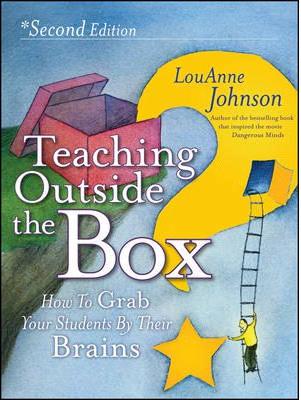BECOME A MEMBER
Join Pivotal Gold

and you have
private access to free and heavily
discounted resources (including one
book a month)
More information here
FREE
NEWSLETTER
Get news of the
latest games, book reviews, articles
and more that have been added to the
website.

(We do not share, give or
sell email addresses)
|

|
Visual Literacy
Different ways
present information visually:
http://www.visual-literacy.org/periodic_table/periodic_table.html
lessons on line
http://www.teachers.ash.org.au/bookzone/vislit.html
From AIS a tutorial downloadable for free
http://portals.studentnet.edu.au/literacy/Minisites/TinaAvatarADSL/default_files/Default.htm
These criteria that are used for judging the UK Kate Greenaway
Medal, an annual award for an outstanding picture book.
http://www.carnegiegreenaway.org.uk/green/crit.html
The artistic style:
Is the medium is appropriate?
Is the artist's personal style creative and distinctive?
Does the style work with the subject?
Is there a consistent quality of illustration throughout the book?
The format:
Is the typography (i.e. format, typeface, print size, spacing, novelty
features etc.) integral or intrusive?
Does the layout draw the reader in or is it distracting?
How appropriate are the size and shape of the book?
What use is made of covers, end-papers and title page?
Synergy of illustration and text:
Are there recurring visual themes or images that enhance the reader's
understanding of the book?
How well do the illustrations and text relate to each other in terms of
layout?
Are the images and text consistent with each other?
Do the illustrations enhance the text or are they 'pictorial
upholstery',
i.e. for decorative purposes only?
In the case of information books, how accurate and clear are the
illustrations?
The visual experience:
How well does the book either offer the reader new experiences, or
reflect
their pre-existing experiences?
Does the book succeed in working at different levels for different
readers?
What are the aesthetic qualities of the book?
What is the overall impact of the book on the reader?
Other questions from the
http://www.yara-online.org site
Do the pictures help the reader understand the story?
If it was read aloud to you and you couldn't see the pictures, would it
be
just as good?
Do they help to build up a sense of atmosphere and anticipation?
Has the illustrator used any special media or techniques for the
illustrations?
How do these enhance the story?
Would the cover catch your eye if you were browsing in a bookstore or
library?
The Last Tree by Mark Wilson
Books by Gary Crew (various illustrators)for Stage 3 and above. ; Shaun
Tan;
and John Marsden, all specifically written for an older audience..
Tips for Exploring Picture Books
http://serafini.nevad.edu/Handouts/Picbooktips.htm
Lower Primary can start with most of the Anthony Brown Books, which
contain visual texts that are full of simple and more complex meanings.
Fox
Voices in the Park
Mystery of Eilean Mor
Short and Incredibly Happy Life of Riley |
Share the World
Share the World is an educational
programme designed to help students
better understand and appreciate the
animal kingdom. The site provides
worksheets and assembly ideas.

 Teaching Outside
the Box: Teaching Outside
the Box:
How to Grab Your
Students By Their Brains
by LouAnne Johnson
This book is a must for beginning teachers and for pros who need
new ideas. It combines street smart practicality
with the creative thinking we need to reach kids
today.
Try RocketReader Kids


|
The ultimate child reading tutor. Ages 4
to 8.
For
children, sight word
recognition is an
important step to
being able to
efficiently learn to
read. If they donít
have to stop and
consider what each
word is, they will
have the freedom to
comprehend the
meaning and context
of sentences and
paragraphs.
Consequently, itís
critical for
parents,
babysitters,
guardians,
grandparents and
educators to help
beginning readers
|